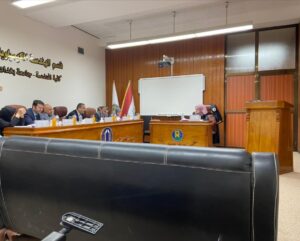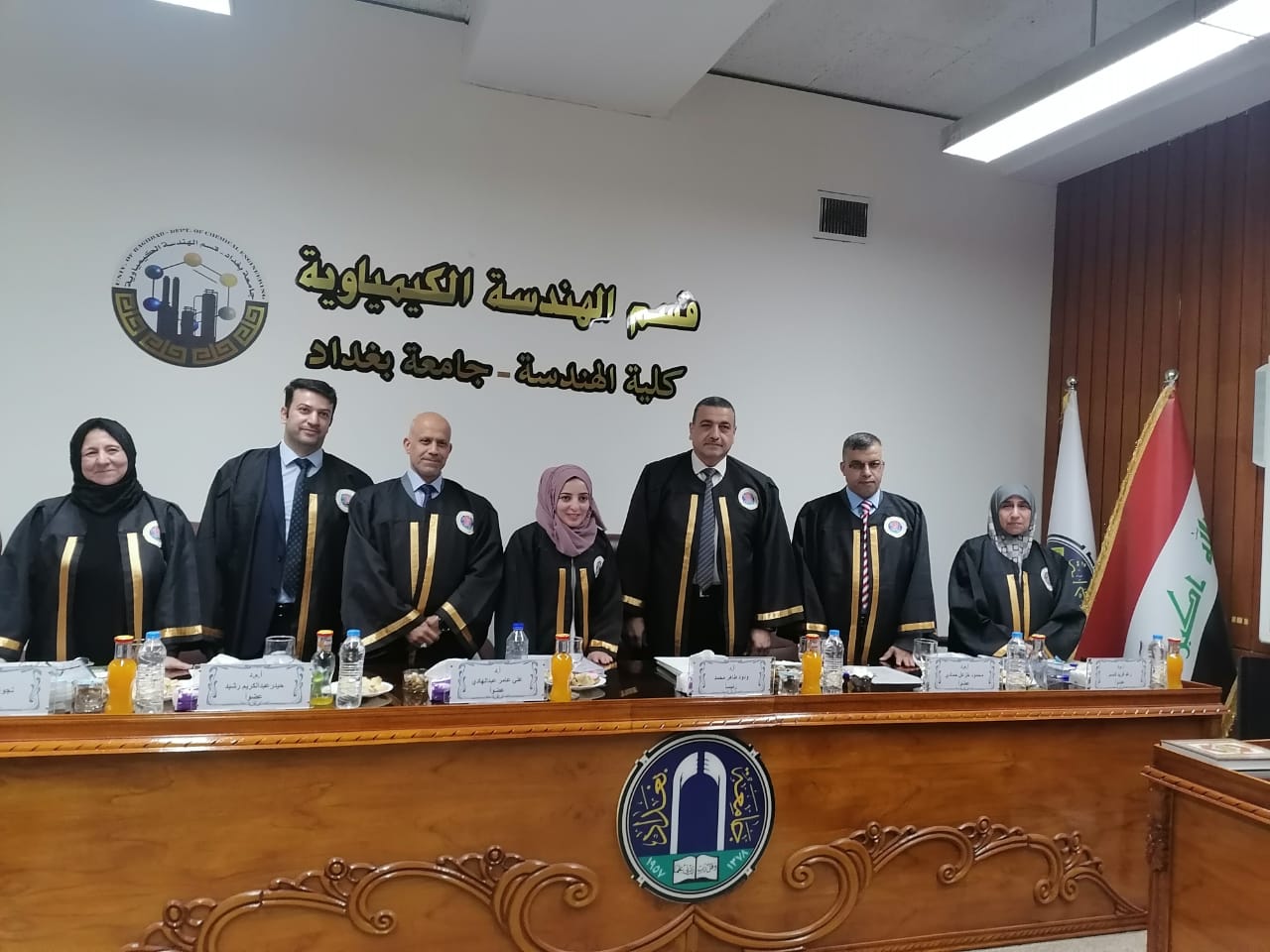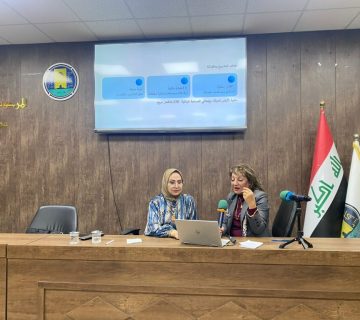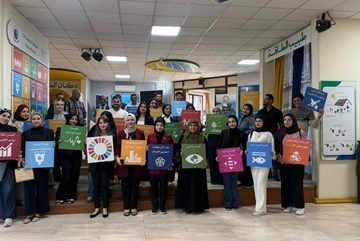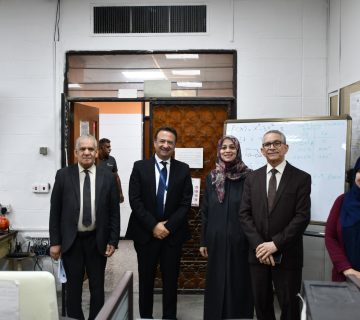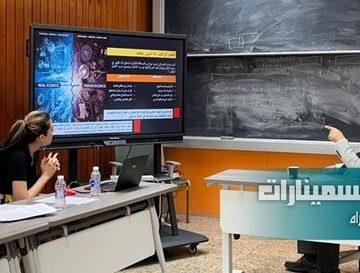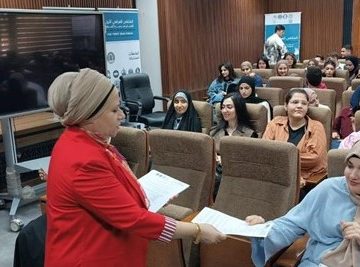On Sunday, 4-30-2023, a defense of dissertation ceremony was held in the Department of Chemical Engineering for the student (Jwan Taher Majeed), about her dissertation titled: “Preparation, Characterization of SSZ-13 and NaX Zeolites as Membranes for CO2 Capture” under the supervision of Prof. Dr. Najwa Saber Majeed.
The Defence Committee included:
Chairman: Prof. Dr. Wadood Taher Mohamme, University of Baghdad
Member: Prof. Dr. Ali A. Abdulhadi, Al-kufa University
Member: Asst. Prof. Dr. Hayder A. Rasheed, University of Baghdad
Member: Asst. Prof. Dr. Raghad F. Almilly, University of Baghdad
Member: Asst. Prof. Dr. Mahmood K. Hummadi, University of Baghdad
The goal of the dissertation was to create a zeolite membrane that absorbs carbon dioxide and reduces its emission to the atmosphere, thereby reducing pollution. After discussing all aspects of her dissertation and proving the validity of her practical findings, the defense committee accepted the form and content and awarded the student a PhD degree for her work.
The thesis summary:
The present work is conducted to study the CO2 gas permeability by zeolite membrane. For this purpose, SSZ-13 zeolite was prepared by hydrothermal method. Also prepared NaX from Iraqi kaolin clay by hydrothermal process. Prepared zeolites were characterized by X-Ray Diffraction (XRD), N2– adsorption/desorption isotherms (BET method), Scanning Electron Microscopy (SEM), Energy Dispersive X–ray Analysis (EDX), X-ray florescence (XRF), Transmission Electron Microscopy (TEM), Atomic Force Microscopy (AFM) and Fourier Transforms infrared spectroscopy (FTIR).
This research focused on the generation of thin films of zeolite SSZ-13 and NaX zeolites on the inner surface of a α_alumina substrate. Then, the zeolite membranes were prepared by the secondary growth method on the inner surface of α_alumina support tube. The supports were seeded by using dip coating method. The obtained membranes were characterized using SEM.
The XRD showed the compatibility of two prepared zeolite with the general structure of standard zeolite. BET tests showed that the SSZ-13 had a surface area 498.1161 m2/g and pore size distribution 2 .31168 nm and the surface area of the prepared NaX zeolite was 252.5138 m2/g and pore size distribution was equal to 2.52471nm. XRF presented that the Si/Al for SSZ-13 was 18.1and for NaX was 1.27. AFM results showed that the zeolites were in nanoscale. SEM test for zeolite membranes show that the crystals in the film are well-intergrown, and there are no visible defect.
Taguchi experimental design method used to determine the optimum conditions for CO2 permeability. The studied process parameters were the sweep flow rate (0.2-1 L/min), feed flow rate (0.2-1 L/min), and feed pressure (1-5 bar). The effect of process factors and their levels on the performance of CO2 gas permeance by zeolite membrane were verified by an orthogonal array L25, the signal to noise (S/N) ratio, and the analysis of variance. Larger the better characteristics of (S/N) ratio was used to maximize CO2 permeance.
The results showed that the feed flow rate has a greater impact on zeolite membrane performance than the sweep flow rate, which has a less significant impact. Multiple regressions used to get the equations that describes CO2 permeance for the SSZ-13 and NaX zeolite membranes while the predicted equations had (R2) equal to 94.15% and 92.65% respectively. The optimum conditions were feed flow rate of 1 L/min, sweep flow rate of 1 L/min and feed pressure of 5 bar.
For the SSZ-13 membrane, a greater amount of strong adsorptive CO2 penetrated by surface diffusion than NaX zeolite. As the Argon sweep gas flow rate increases, CO2 permeance increases in both membranes. The permeance of CO2 increased

